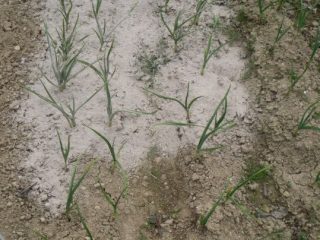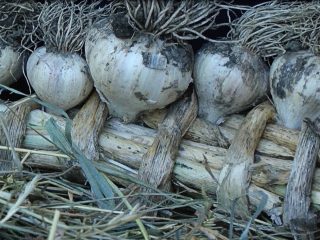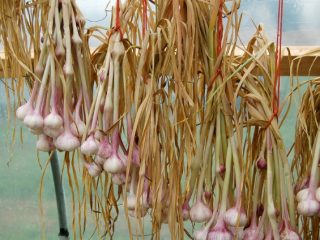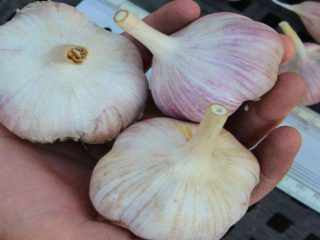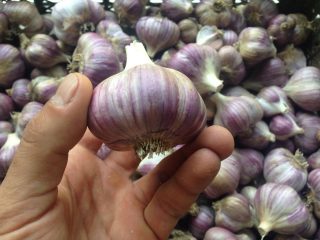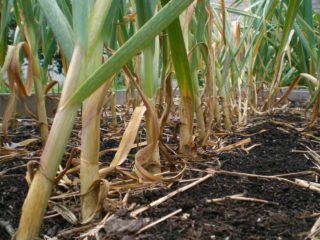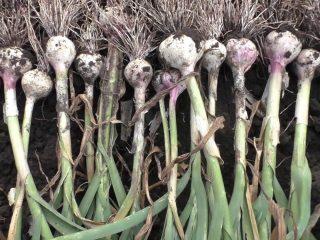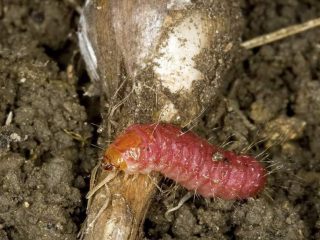Content
When garlic turns blue or green in ready-made dishes and home-canned food, it looks strange, not aesthetically pleasing, and even suspicious. However, if you know why this happens, it is easy to understand that a change in shade often depends mainly on the characteristics of the garlic itself and does not indicate the unsuitability of the dish or preparation for food. It is not possible to completely insure against blueing or greening, but there are certain nuances, knowing which, you can significantly reduce the risk of changing the shade.
Why does garlic turn green when cooking?
Most housewives have probably encountered a situation where garlic in ready-made dishes or home-preserved jars has turned blue or green. In fact, there is no reason to worry with such unnatural pigmentation.
Why did garlic turn blue when preserved?
The change in color during conservation has even become the subject of scientific study. Experiments and studies have made it possible to explain the mechanism due to which garlic pulp turns blue.
The variety or cultivation technology does not matter. It has also been established that it turns blue regardless of the quality of the substrate and its chemical composition. The fertilizers used also have no effect on pigmentation.
When the outer shell of the cloves in the pulp is destroyed under the influence of oxygen and light, a chemical reaction begins with the participation of essential oils and enzymes. One of them (allinase) activates the breakdown of allicin (also known as allyl sulfide cysteine sulfoxide), a substance responsible for the pungent taste and health benefits. It turns blue because allicin, in addition to ammonia, sulfates, sulfides and organic acids, also decomposes into specific pigments.
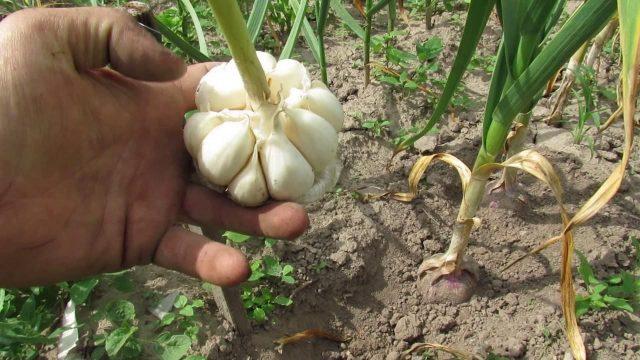
Garlic often turns blue or green, even if you choose the right place to plant it and provide proper care.
It was experimentally found that garlic often turns blue and green during heat treatment at a fairly high temperature (40-80 ° C). In addition, the process is accelerated by amino acids and a slightly acidic pH environment. In homemade preparations, vinegar is often used; most recipes involve heat treatment and gradual cooling of the jars under a blanket. Therefore, it is easy to understand that during conservation, favorable conditions are created, crushed garlic cloves turn blue.
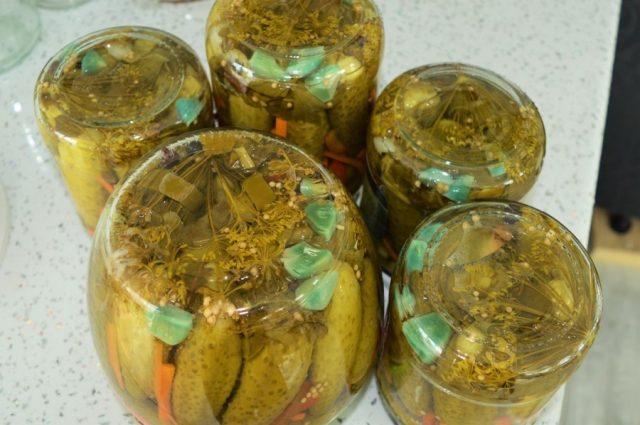
Cloves in homemade preparations may turn blue or green either evenly or in separate spots
In addition to the growing region, the pigmentation process is influenced by the level of allicin concentration.The head accumulates it gradually; accordingly, young, still slightly unripe cloves in homemade preparations turn blue less often than mature ones. And heads used immediately after collection are less common than those that have had time to lie at room temperature.
Another theory is that garlic in preparations turns blue more often and more intensely, the more copper it contains. But she did not receive unequivocal confirmation.
Why did the garlic turn blue in pickled mushrooms?
When the garlic turns green or blue in pickled mushrooms, the jars with the preparations are often simply thrown away. This is due to what many people know: when onions interact with poisonous mushrooms, they also turn blue or change their hue to blue-green.
However, in this case it is wrong to draw such an analogy. Garlic does not work as an indicator of the edibility of mushrooms. It turns blue for the reasons described above - violation of the integrity of the lobules, prolonged heat treatment, acidic environment.
In addition, mushrooms, unlike vegetables used for home preservation, have a much more complex protein composition. Therefore, in principle, they do not interact very well with garlic.
If possible, it is better to choose recipes for pickling mushrooms with other spices. When crushed cloves are added to jars, they almost always turn blue, despite the lack of prerequisites for a high concentration of allicin.
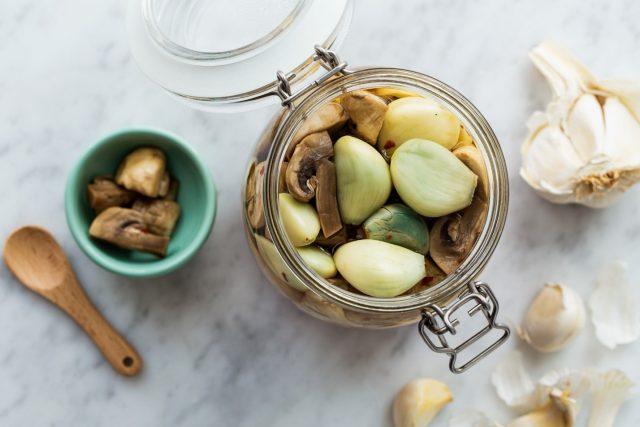
There are a lot of recipes for pickled mushrooms without garlic; It’s quite possible to find one that suits your taste
Why did garlic turn green when salting lard?
There is no way to avoid using garlic cloves when salting lard. And often this irreplaceable ingredient begins to turn blue or green. Unnatural pigmentation appears as a result of grinding the segments into pulp or cutting them into small pieces.
It is useless to use whole slices when salting lard - they will not impart taste and aroma to the finished product. However, you need to take into account that it turns blue, spoiling the presentation of the finished product, less often if you salt lard with large plastics or slices and store it only in the refrigerator.
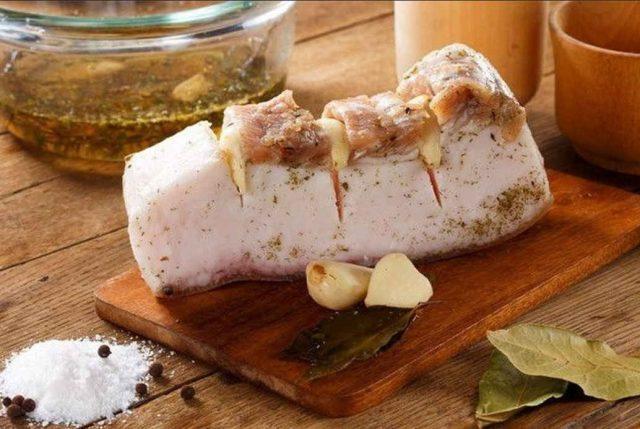
It is impossible to completely guarantee that garlic will not turn blue when salting lard, but it is quite possible to reduce the risk of unwanted pigmentation
Why does garlic turn green when fried?
When garlic turns green or blue when frying, baking in the oven, or adding to a hot dish, this is due to the complex influence of two factors:
- Violation of the integrity of the teeth. Before heat treatment, in most cases they are finely chopped or crushed into pulp through a press. In this case, allicin certainly begins to decompose, releasing, among other things, specific pigments responsible for the fact that they turn blue or green.
- Heat. Activates the process of allicin breakdown. It is stored in a frying pan or saucepan for a long time, so the garlic turns blue quite often.
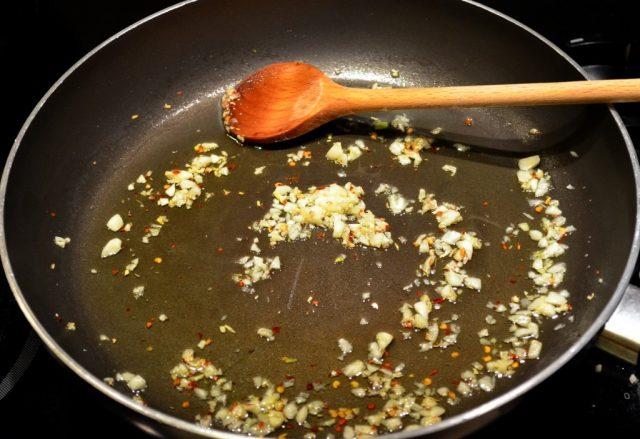
Flavored oil allows you to provide the dish with the desired smell; with this method of frying, the garlic will definitely not turn blue
Why does grated garlic turn green?
Cloves grated or passed through a press turn into a pulp, which inevitably interacts with oxygen and light. In this case, there is no way to avoid a chemical reaction involving allicin.
However, grated garlic does not always turn blue or green. This is explained by the speed of the reaction. And it varies greatly depending on the region of origin, the degree of maturity of the heads and the correctness of their storage.
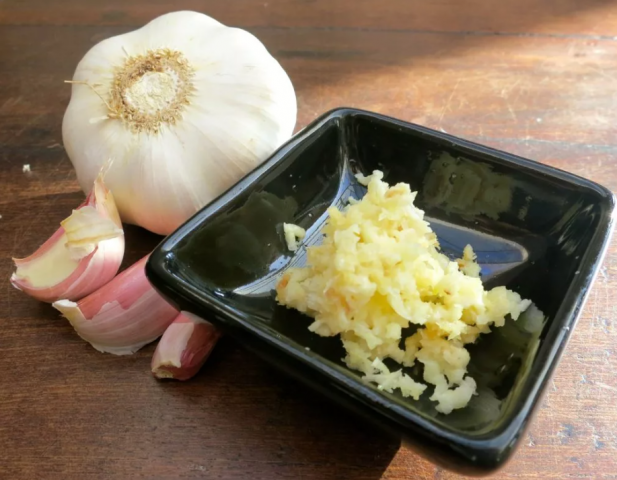
Grated cloves never turn blue immediately: this takes at least several hours
What to do if garlic turns green
Often garlic turns blue for objective reasons that the housewife is unable to influence. However, you can significantly increase the chances of preserving the presentation of ready-made hot dishes and homemade preparations if you know about a few simple life hacks:
- Follow the rules for storing home preserved food. There is often not enough space in the refrigerator for all the jars with preparations, but even if you keep them in a moderately cool place (18-22 ° C), the garlic turns blue and green much less often.
- Whenever possible, choose canned food recipes that require cold cooking. If you pour marinade over vegetables without boiling it first, the appearance of the contents of the jar remains as natural as possible. This also applies to garlic. Such preparations without heat treatment must be stored in the refrigerator, but the garlic in them rarely turns blue.
- If the recipe calls for the use of whole slices, it is better to peel them manually, without a knife or other sharp objects. This significantly reduces the risk of mechanical damage to the skin and triggering a chemical reaction, as a result of which the garlic turns blue.
- Use slightly unripe heads for home canning.They have a less pungent taste, but it is easy for the preparations to provide the required spiciness by slightly increasing its amount in the recipe. It is also desirable that the crop be freshly harvested. Heads that have had time to sit after harvesting accumulate allicin and turn blue noticeably more often, even if the recommended storage conditions are followed.
- For those who live in regions with a temperate and more severe climate, local garlic is needed for home preservation and cooking, rather than imported. The one that is imported from China or Uzbekistan turns blue much more often and more intensely than the domestic one. In addition, its taste and pungency leave much to be desired.
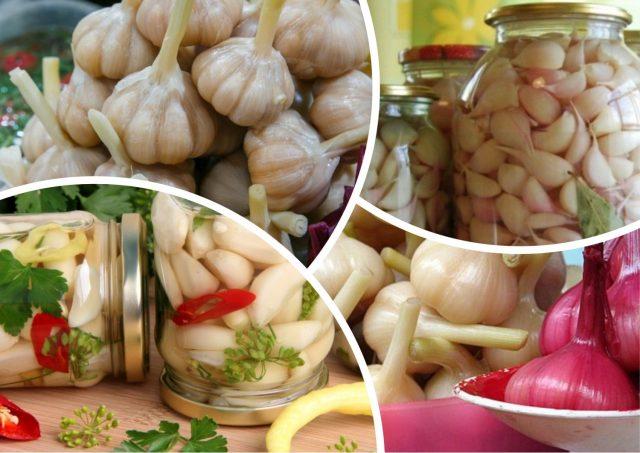
For those who use the described tricks, garlic rarely turns blue
Is it possible to eat green garlic?
Garlic, after it turns green or blue, is definitely edible; its consumption does not cause any negative health consequences. Such unnatural pigmentation does not mean the presence of toxins in homemade preparations or dishes, does not indicate low quality of the crop, its cultivation using large doses of chemical fertilizers, or the presence of GMOs.
In warm southern countries, where garlic, characterized by a high content of allicin, is used quite widely in cooking, such unnatural pigmentation is generally not paid attention to, because the taste of a finished dish or homemade product does not change in any way because it turns blue or green. This is a completely natural phenomenon, a consequence of a chemical reaction, the course of which the hostess is generally unable to influence.When garlic in ready-made dishes and home-canned food turns blue or green, there is no need to take the blame on yourself, believing that the reason is due to violations of the cooking technology or non-compliance with storage conditions.
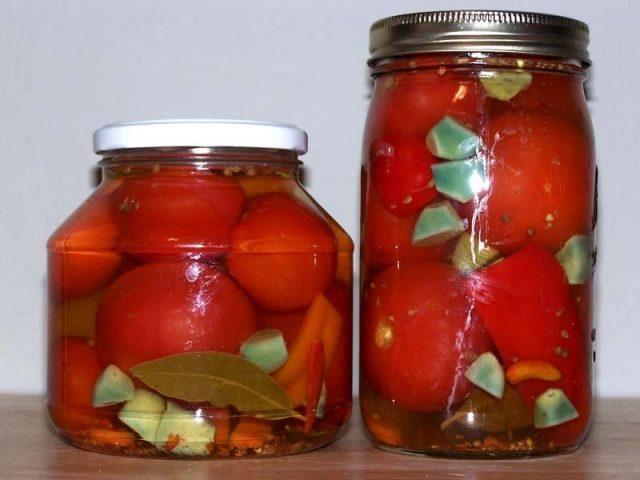
If the unusual appearance of the workpiece still confuses you, the pieces are simply removed before serving.
Conclusion
Garlic turns blue or green in homemade preparations and other dishes quite often. But this does not always mean errors in cooking technology or improper storage. This pigmentation does not look very aesthetically pleasing, but does not pose any health hazard. The taste of a dish or preparation in which the garlic turns blue or green does not change.
